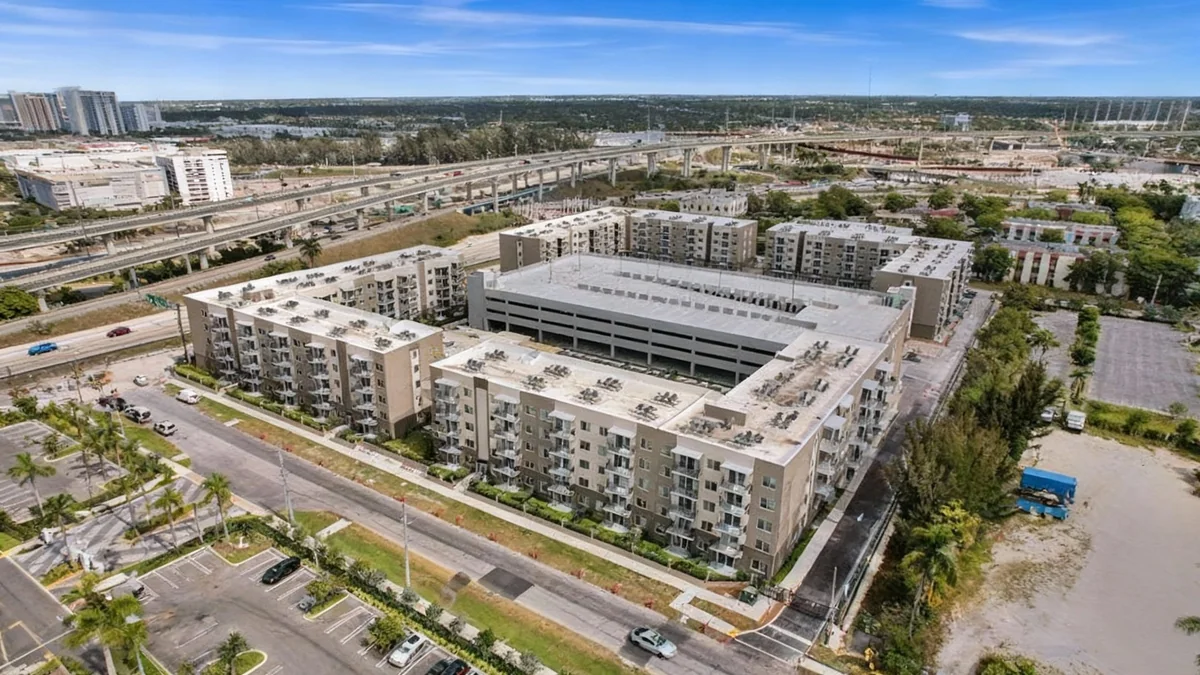After several years of subdued activity, the U.S. commercial real estate market is showing clear signs of a rebound, driven by resurgent lending and a significant shift toward optimism among investors. Key indicators, including lending volumes and market sentiment, suggest a more robust environment heading into the final quarter of 2025.
Key Takeaways
- Commercial Mortgage-Backed Securities (CMBS) lending volume in 2025 has already surpassed the total for all of 2024, exceeding $62 billion year-to-date.
- A key industry sentiment index from the Commercial Real Estate Finance Council (CREFC) has reached its second-highest level since 2017.
- Government-sponsored lenders like Fannie Mae and Freddie Mac are increasing their activity and introducing new, competitive loan products.
- Regional markets, such as Richmond, are reflecting this national trend with significant year-over-year increases in property sales volume for multifamily and office assets.
CMBS Market Leads Lending Recovery
One of the most significant signs of recovery comes from the Commercial Mortgage-Backed Securities (CMBS) market. This sector, which pools commercial real estate loans and sells them to investors as bonds, has experienced a dramatic turnaround.
According to data from Commercial Mortgage Alert, CMBS volume in the United States has already topped $62 billion year-to-date. This figure is notable because it exceeds the total volume recorded for the entire 2024 calendar year, with the traditionally busy fourth quarter still ahead.
Investor demand for these securities is strong. The risk premium, or "spread," over the benchmark U.S. Treasury has tightened to levels not seen in years, indicating a high appetite for the product. This means investors are confident enough in the underlying assets to accept a lower return relative to risk-free government bonds.
Attractive Returns for Investors
Interestingly, AAA-rated CMBS bonds are currently priced with a wider spread than the average investment-grade corporate bonds (rated BBB and up). This pricing structure suggests that investors perceive they are receiving a favorable risk-adjusted return for high-quality commercial real estate debt.
Government Agencies and Banks Increase Capital Flow
Beyond the CMBS market, other major capital providers are also ramping up their lending activities. Government-sponsored enterprises Fannie Mae and Freddie Mac, which focus exclusively on multifamily housing loans, are well below their regulatory lending caps for the year.
This positioning allows them to aggressively increase their loan production in the fourth quarter. Both agencies are actively seeking to expand their volumes, providing essential liquidity to the apartment sector.
Freddie Mac Introduces New Loan Feature
In a move to compete more effectively with insurance company lenders, Freddie Mac has introduced a new "Borrow Up" feature for its Lease-Up loans. This product allows developers of newly built apartment complexes to increase their loan amount based on improved net operating income (NOI) during the first 24 months of stabilization.
This feature provides greater flexibility for developers during the critical initial leasing phase of a new project, a space traditionally dominated by more accommodating insurance company lenders.
Broad-Based Lending Growth
The trend of increased lending is not limited to agencies. Traditional banks and insurance companies demonstrated a dramatic rebound in lending during the second quarter of 2025 compared to the same period in 2024. This trend is expected to continue for banks through the end of the year, while insurance companies are already positioning themselves for a strong start to 2026.
Investor Sentiment Reaches a Multi-Year High
The renewed flow of capital is mirrored by a significant improvement in market sentiment. The Commercial Real Estate Finance Council (CREFC) recently released its 3rd Quarter 2025 Sentiment Index, which measures the outlook of industry participants.
The index reached its second-highest level since 2017, signaling a decisive shift from the cautious attitudes that have prevailed in recent years. The report highlighted several key areas of growing optimism among commercial real estate professionals.
There was nearly universal agreement that demand for financing is strong. Furthermore, a dramatic shift occurred toward positive sentiment regarding the future impact of mortgage rates and capitalization rates (cap rates) on commercial real estate performance.
"With banks offering 5-year loans in the 4.50% to 4.75% range and insurance companies and the agency lenders in the same range, sentiment should be positive," the original report noted, underscoring the favorable financing environment that is boosting confidence.
Local Market Data Confirms National Trend
Activity in regional markets like Richmond, Virginia, provides concrete evidence of the broader recovery. Data from CoStar, a commercial real estate analytics firm, shows robust sales activity across several property types through the first three quarters of 2025.
Sales volume for multifamily, office, and retail properties has already surpassed the levels seen during the same period in 2024. The growth in specific sectors has been particularly strong.
- Multifamily: Year-to-date sales volume has increased by over 675% compared to the same period last year.
- Office: Sales of office buildings have rebounded with an increase of over 80%.
- Industrial: In contrast, industrial property sales are down approximately 33% year-to-date.
While the growth is impressive, it is important to note that a significant portion of 2024's sales activity occurred at the end of the year. To maintain this pace, sales in the final quarter of 2025 will need to be equally strong. However, the data confirms that transaction activity has returned, and capital is actively being deployed in the market.





